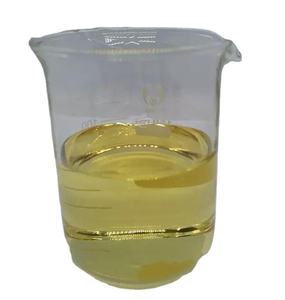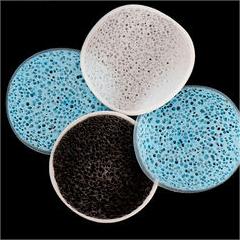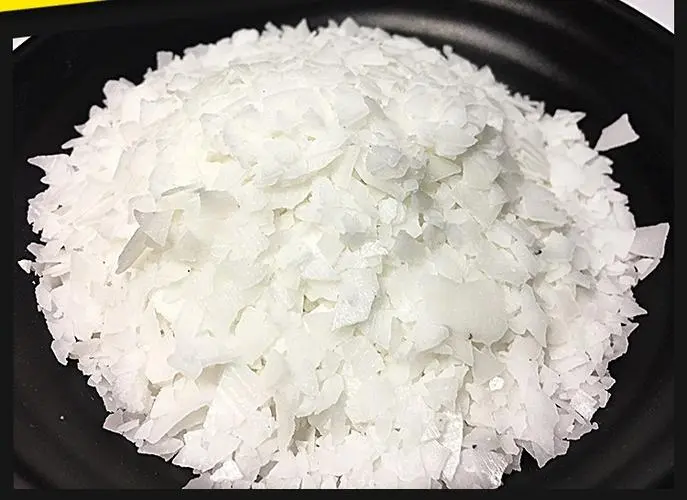Overview of Nonionic Surfactant 2, 4, 7, 9-Tetramethyl-5-Decyne-4, 7-Diol CAS 126-86-3
Gemini surfactants, also known as dimeric or twin-chain surfactants, are a class of amphiphilic molecules characterized by two hydrophobic tails and two hydrophilic heads connected via a spacer group. This unique architecture distinguishes them from conventional single-chain surfactants and imparts exceptional surface-active properties, including lower critical micelle concentration (CMC), stronger surface adsorption, and enhanced interfacial activity. Gemini surfactants have attracted considerable attention for their potential to improve the performance of various formulations and processes requiring surfactants.
Features of Nonionic Surfactant 2, 4, 7, 9-Tetramethyl-5-Decyne-4, 7-Diol CAS 126-86-3
-
Reduced Critical Micelle Concentration (CMC): Gemini surfactants form micelles at significantly lower concentrations than conventional surfactants, leading to increased efficiency and cost-effectiveness.
-
Enhanced Surface Activity: Their dual hydrophilic heads provide a higher packing efficiency at interfaces, resulting in superior surface tension reduction and better wetting properties.
-
Stronger Adsorption: Gemini surfactants adsorb more strongly onto surfaces due to their larger headgroup, which can lead to improved cleaning and detergency.
-
Synergistic Effects: In mixtures with other surfactants, Gemini surfactants can exhibit synergism, improving overall surfactant efficiency.
-
Versatile Spacer Groups: The spacer connecting the two hydrophilic groups can vary in length, flexibility, and chemical nature, allowing tuning of Gemini surfactant properties for specific applications.
-
Thermodynamic Stability: Gemini surfactant systems often show greater thermodynamic stability, improving the stability of emulsions and foams.

(Nonionic Surfactant 2, 4, 7, 9-Tetramethyl-5-Decyne-4, 7-Diol CAS 126-86-3)
Specification of Nonionic Surfactant 2, 4, 7, 9-Tetramethyl-5-Decyne-4, 7-Diol CAS 126-86-3
Nonionic surfactants are compounds that do not carry charges or have a polar surface orientation. They are commonly used as surfactants in various applications, such as cleaning products, personal care products, and industrial processes.
In this product content, we will be discussing the specifications of nonionic surfactant 2, 4, 7, 9-tetramethyl-5-decene-4, 7-diol (CAS number 126-86-3). These surfactants are designed to provide superior cleaning performance, foam stability, and durability.
The first property that sets these surfactants apart from others is their nonionic nature. This means they do not carry charges and do not have a polar surface orientation. This allows them to effectively remove dirt and grime without leaving behind a residue or causing irritation to skin or clothing.
The second property that makes these surfactants effective in cleaning is their foam stability. They can help form and reduce the need for excessive, making the process more efficient and cost-effective.
The third property that sets these surfactants apart from others is their durability. They can withstand harsher detergents and temperatures, making them suitable for use in a wide range of applications.
Overall, nonionic surfactant 2, 4, 7, 9-tetramethyl-5-decene-4, 7-diol is an excellent choice for those looking for a high-quality, non-toxic, and durable surfactant for their cleaning needs. Its unique properties make it a popular choice among professionals and consumers alike.

(Nonionic Surfactant 2, 4, 7, 9-Tetramethyl-5-Decyne-4, 7-Diol CAS 126-86-3)
Applications of Nonionic Surfactant 2, 4, 7, 9-Tetramethyl-5-Decyne-4, 7-Diol CAS 126-86-3
Nonionic surfactants are an important class of surfactants that offer a variety of benefits for various applications. One such application is in the cleaning and personal care industry. Nonionic surfactants can be used to create foam or emulsions that are gentle on skin and effective at removing dirt and grime from surfaces.
In addition to their use in cleaning and personal care products, nonionic surfactants have also been applied to various industrial processes. For example, they can be used as surfactants in ink formulations to reduce drying time and improve print quality. They can also be used in the production of plastics and other materials by reducing friction and improving interfacial stability.
Another potential application of nonionic surfactants is in the production of personal care products. For example, they can be used in hand soap and body washes to provide a soft, lather-free texture that is gentle on the skin. Nonionic surfactants can also be used in toothpaste to provide a conditioning effect that helps prevent dryness and damage to tooth enamel.
Nonionic surfactants are not only useful in consumer products but also in industrial processes. They are environmentally friendly and biodegradable, making them an attractive alternative to traditional surfactants that can be harmful to the environment. Additionally, they are relatively inexpensive and can be produced using a wide range of raw materials, including water and solvents.
In conclusion, nonionic surfactants play an important role in many different industries, including cleaning, personal care, industrial processes, and environmental protection. Their gentle nature and effectiveness make them a popular choice among consumers and professionals alike. As the demand for sustainable and eco-friendly products continues to grow, nonionic surfactants will likely continue to play an important role in this field.
Company Profile
SurfactantChina is a trusted global chemical material supplier & manufacturer with over 12-year-experience in providing super high-quality surfactant and relative products.
The company has a professional technical department and Quality Supervision Department, a well-equipped laboratory, and equipped with advanced testing equipment and after-sales customer service center.
If you are looking for high-quality surfactant and relative products, please feel free to contact us or click on the needed products to send an inquiry.
Payment Methods
L/C, T/T, Western Union, Paypal, Credit Card etc.
Shipment
It could be shipped by sea, by air, or by reveal ASAP as soon as repayment receipt.
5 FAQs of Nonionic Surfactant 2, 4, 7, 9-Tetramethyl-5-Decyne-4, 7-Diol CAS 126-86-3
Nonionic surfactants are surfactants that do not have the characteristic molecular structure of cationic or anionic surfactants. They are typically water-soluble and effective at reducing surface tension in various applications.
Q: What is nonionic surfactant?
A: Nonionic surfactants are surfactants that do not carry a positive charge or negative charge, but rather only possess a hydrophilic (water-loving) character. They are called “nonionic” because they do not carry an electrical charge.
Q: How are nonionic surfactants different from cationic and anionic surfactants?
A: Cationic and anionic surfactants are positively charged or negatively charged surfactants, respectively. Nonionic surfactants, on the other hand, lack either a positive or negative charge.
Q: Are nonionic surfactants safe to use in food processing?
A: Yes, nonionic surfactants are generally considered safe for use in food processing. However, some surfactants may cause discoloration or off-gassing if used too heavily or if they are exposed to high temperatures.
Q: Can nonionic surfactants be used as solvents?
A: No, nonionic surfactants are not suitable as solvents. Solvents must be polar or charged in order to dissolve nonionic surfactants.
Q: Is nonionic surfactant used in detergents?
A: Yes, nonionic surfactants are often used in detergents due to their effectiveness at reducing surface tension and improving cleaning properties. However, the type and concentration of nonionic surfactant used in a detergent will depend on the specific application.
Q: Are nonionic surfactants environmentally friendly?
A: Yes, many nonionic surfactants are designed to be biodegradable and can be composted or recycled. This makes them a more sustainable alternative to traditional surfactants that can harm the environment.

(Nonionic Surfactant 2, 4, 7, 9-Tetramethyl-5-Decyne-4, 7-Diol CAS 126-86-3)





